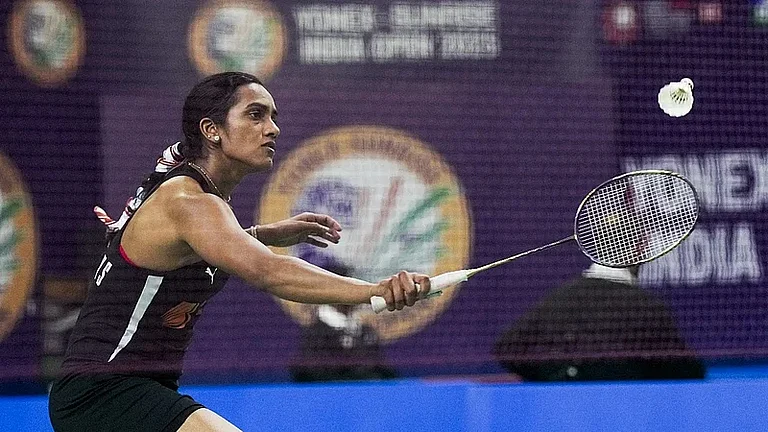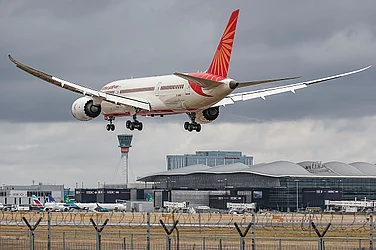For years, a short stretch of flyover in downtown Bangalore drew sniggers and jokes—right at the top, believe it or not, was a traffic signal where vehicles from two ramps crossed. When the signal was done away with, authorities put down a clumsy divider of concrete blocks which always fell out of place because motorists rearranged them to squeeze through. Film-maker Pawan Kumar remembers driving up the Richmond Circle flyover on a rainy night with trepidation. The experience led to his 2016 Kannada film U-Turn—a supernatural thriller in which two-wheeler riders who sneaked past the median met a mysterious end.
“The film worked because people saw it as any traffic violation that can come and hurt you,” he tells Outlook. “I’m all for steep traffic penalties.”
The MV Act surely has had an effect—officials note a 15-20 per cent rise in applications at the Regional Transport Offices in recent weeks as motorists queue up to get their papers in order. Just on September 18, the Bangalore police totted up Rs 34.72 lakh in penalties—topping the list of breaches were helmet-less riding, haphazard parking and jumping signals.
More than any other city, Bangalore’s traffic woes get top billing—with good reason. It hasn’t had any significant road expansion since the early 2000s, points out activist R.K. Misra. “Given the huge vehicle population, there’s also massive violation of traffic laws,” he says. “Now, if the government is going to reduce the fines, it’d be a retrograde step.”
The Karnataka government, which notified the new penalties three weeks ago, is currently vetting legal issues involved in a revision. The rethink, says an official, was because the fines are “pinching the public”.
“Even with low traffic fines, if you link (penalties) to the right-to-drive itself, it’s possible to build something more equitable,” says Ashwin Mahesh, an urban affairs expert. Suspending driving licences or even cancelling them is a deterrent too, he reckons. As for traffic fines creating room for corruption, Mahesh points out an anomaly that can be set right: “India is somewhat unusual when it comes to fine-collection. Officers on the road collect fines. It’s not done anywhere else.”
In the past five years, Bangalore has registered 2.6 million two-wheelers and cars, while the bus service added no new buses. “With more buses, people will switch from private vehicles. Right now it’s a vicious cycle,” argues Vinay Sreenivasa of Bangalore Bus Prayanikara Vedike. Still, the Bangalore Metropolitan Transport Corporation (BMTC), with 6,513 buses, runs the largest fleet in India. Of course, public transport in Bangalore depends on buses, unlike in Mumbai and Chennai, which have local train networks.
As for the Metro, which recently clocked its highest daily ridership of 4.58 lakh passengers during a festival weekend, just the initial 42 km stretch is operational at present. The city’s IT hubs of Whitefield and Electronics City will only be connected in Phase 2, which is stymied by land acquisition delays.
Agrees Ashwin Mahesh. “We really need to build a very large network of walkable streets and double the bus fleet. Fundamentally, it’s the poorest who need this,” he says. Though the main thoroughfares in Bangalore’s central
district have been revamped in recent years, much of its growth—and its infrastructure problems—relate to the vast outlying localities added to the municipality a decade ago.
“There is a misconception in the way we imagine public expenditure for mobility,” says Mahesh. “We are willing to spend tens of crores on building motorways and virtually nothing on walking. Ideally, we should develop 1,500 roads across the city to be pedestrian-friendly.” Mahesh suggests taking up at least 10 road clusters, based on pedestrian accident rates and commercial activity, in order to improve accessibility.
Indeed, various ideas have come up—app-based bicycle rentals, for instance. “Essentially, shared mobility is one way by which you can reduce congestion,” says R.K. Misra, an investor in Yulu Bikes. Plans for a Unified Metropolitan Transport Authority for Bangalore has been in the works, though the idea isn’t new—a common body had been created 12 years ago to coordinate land transport. Will a fresh, coordinated approach finally solve Bangalore’s knotty transportation challenges?
By Ajay Sukumaran in Bangalore


























